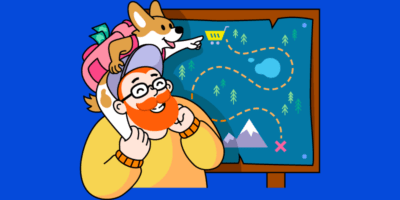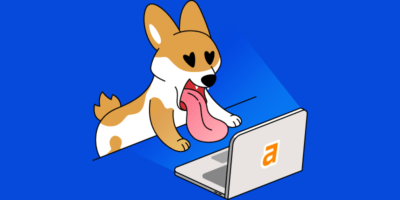In fact, 71% of them start their research with a generic search. They’re reading blog posts, watching videos, consuming reviews, asking their friends, participating in communities—before they even begin to consider your product.
So unless you’re creating content that buyers are searching for early on, it’s likely that you’re not even going to be in the consideration set. But if you can appear in the early stages of the buyer’s journey, you get the opportunity to educate them and influence their decision-making.
In this post, you’ll learn the following:
- What is the buyer’s journey?
- What are the stages of the buyer’s journey?
- How to create content for the buyer’s journey
The buyer’s journey is the process a person goes through before making a purchase.
There are three stages:
- Awareness – The buyer realizes they have a problem. They want to understand more about it.
- Consideration – The buyer is looking for and comparing potential solutions to their problem.
- Decision – The buyer purchases a solution.
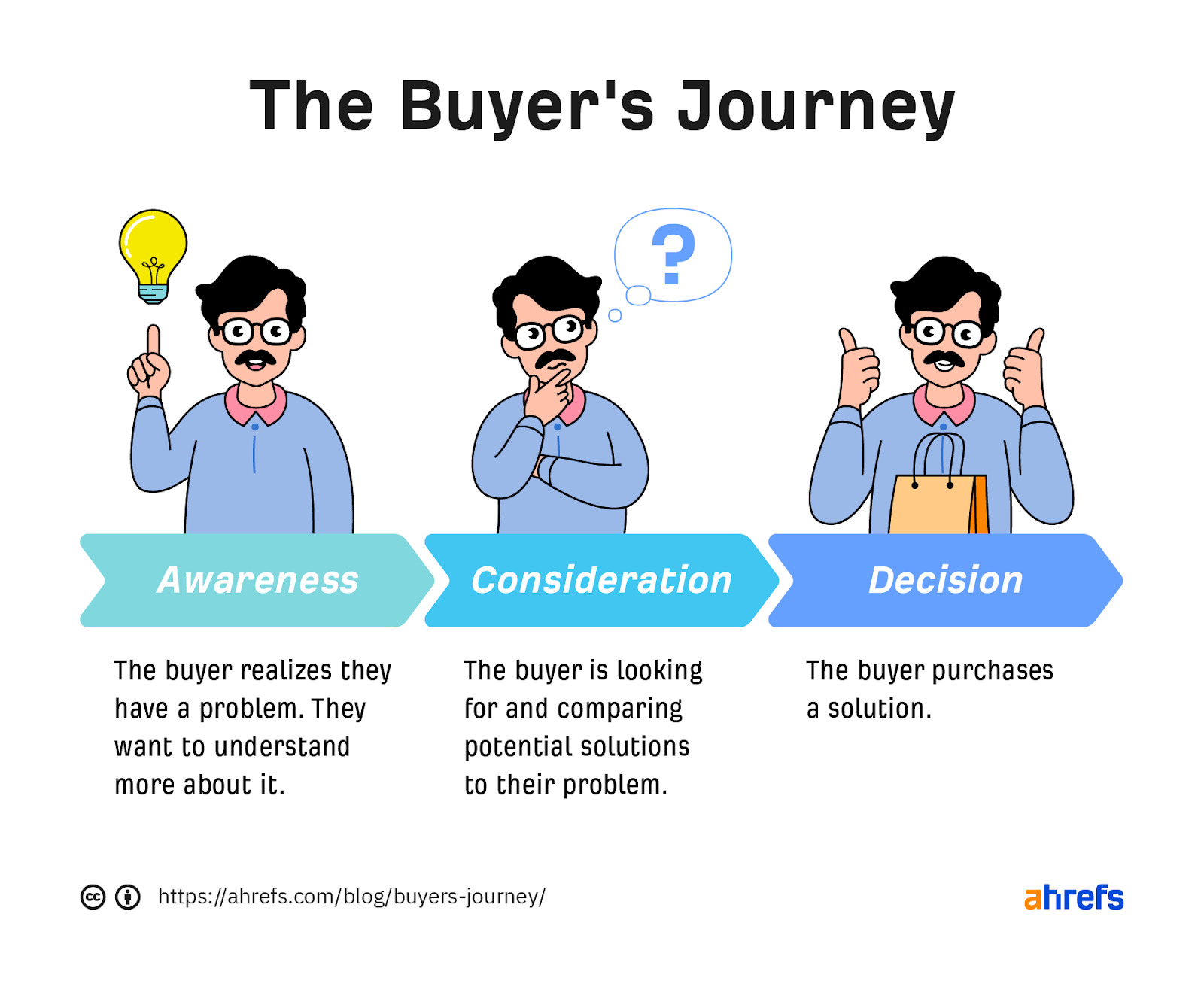
The purpose of understanding the buyer’s journey is to create content for each stage.
Let’s look at how to do that.
Step 1. Create buyer persona(s)
A buyer persona is a “fictional person” you create who represents the common characteristics of your customer. Knowing what they’re looking for will help you create the right kind of content.
Creating a buyer persona is not a thought exercise. Unfortunately, many companies treat it as such. They identify personas based on imagination, fill up a document, and tuck it in the recesses of a Google Drive somewhere, never to be seen again.
Buyer personas need to be based on real-world evidence. So rather than sitting in a meeting room and conjuring them up, we need to get outside.
Here’s the three-step process content marketer Adrienne Barnes recommends:
- Get to know your customers – Find your best customers and call them. These are the customers who knew immediately how your product worked or have been using your product without any complaints. Ask them questions about your product, what they like/dislike, the problems they have, their responsibilities, and so on. (Alternatively, you can survey them.)
- Organize the data – Look for patterns among the responses. You’re looking out for commonly repeated phrases, words, and remarks.
- Segment the audience – From the patterns you’ve gathered, you should start to see some specific audiences popping out of the data. These will be your buyer personas.
Recommended reading: How to Create a Buyer Persona for Your Business
Step 2. Find topics that match each stage of the buyer’s journey
Let’s illustrate this step via an example. We’ll use Billy Blogger as our buyer persona. Billy wants to build a revenue-generating blog so that he can quit his full-time job.
We’ll start by considering Billy’s potential journey, constructed from customer feedback and data:
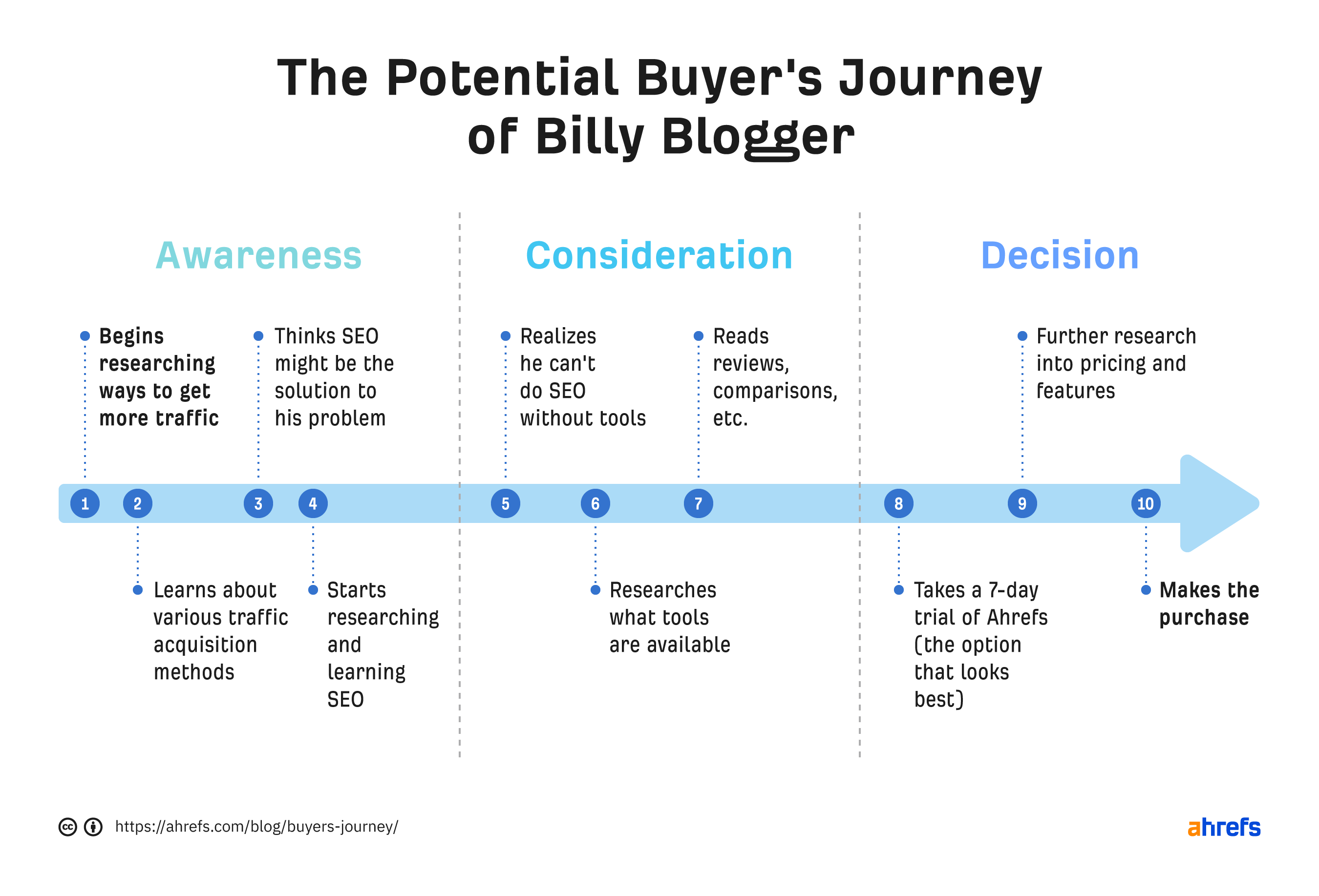
Awareness
In this stage, Billy realizes he has a problem: His site is not getting enough traffic. So he searches for ways to get more traffic to his site. He learns about the various traffic acquisition methods and decides that SEO could be the solution to his problem. He begins researching and learning more about SEO.
So, if we’re creating content for this stage, we’re actually looking for topics related to:
- Blog traffic
- Website traffic
- SEO
Here’s how to find more relevant topics:
- Go to Ahrefs’ Keywords Explorer
- Enter those terms
- Go to the Matching terms report
Since the “Awareness stage” keywords are mostly informational, we’ll switch the toggle to Questions.

To find more keywords, add informational modifiers (e.g., tips, learn, resource, guide, examples, ideas) in the Include box.
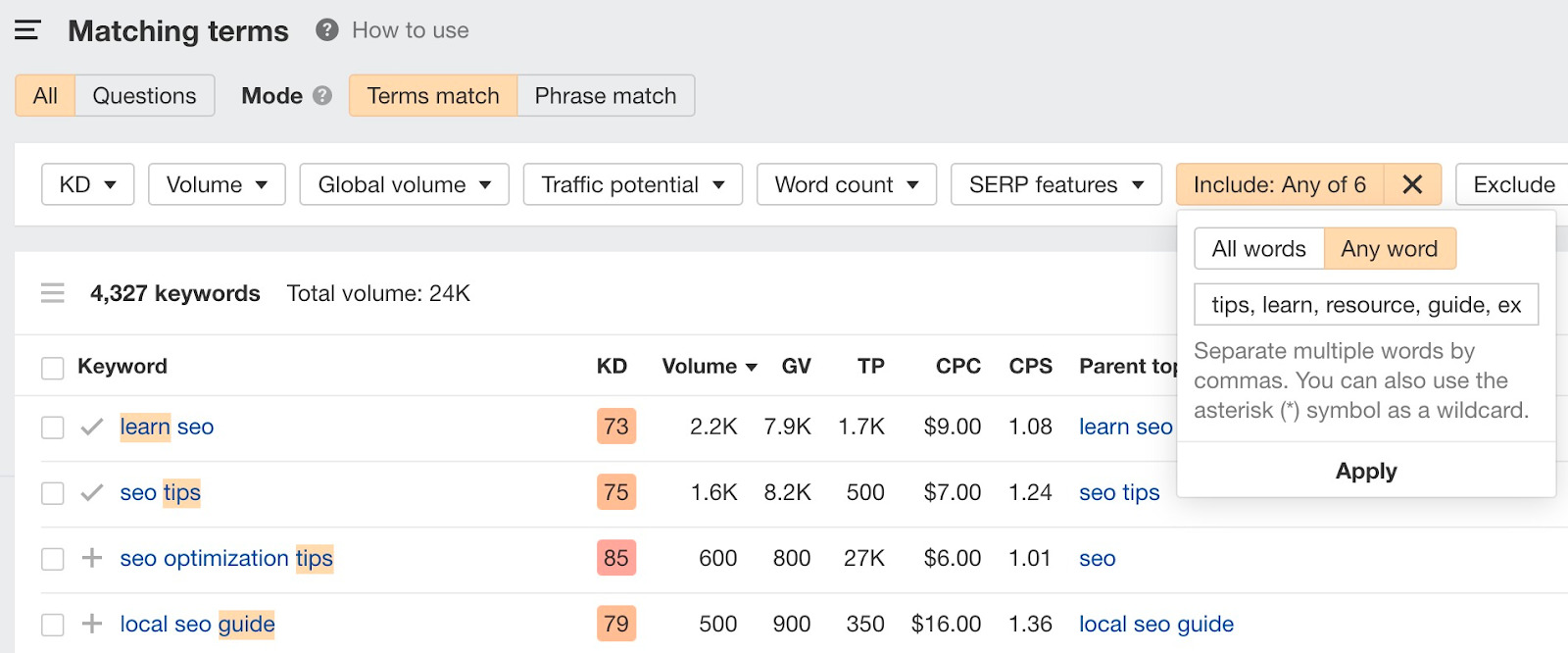
There are over 30,000 keywords, and not all of them are going to align with our buyer persona. So we’ll look through the list and pick out those keywords that are relevant.
For example, the topic “how to drive traffic to your website” is likely a topic Billy is searching for at this stage. And we’ve targeted that topic with a blog post.
Consideration
In this stage, Billy realizes he needs a tool to do SEO. He begins looking for the type of tools that are available. As he encounters each product, he makes comparisons (e.g., reads reviews). If there are free versions, he’ll test the different tools out.
If we’re creating content for this stage, we’re actually looking for topics related to:
- SEO tools.
- Tools for each aspect of SEO (e.g., keyword research tools, link building tools).
- Free versions of tools (e.g., free backlink checker).
- Our brand name.
- Our competitors’ brand names.
Here’s how to find relevant topics:
- Go to Ahrefs’ Keywords Explorer
- Enter terms like “seo tools,” “ahrefs,” or “moz”
- Go to the Matching terms report
- In the Include box, add comparison modifiers (e.g., vs, versus, best, top, review, reviews)
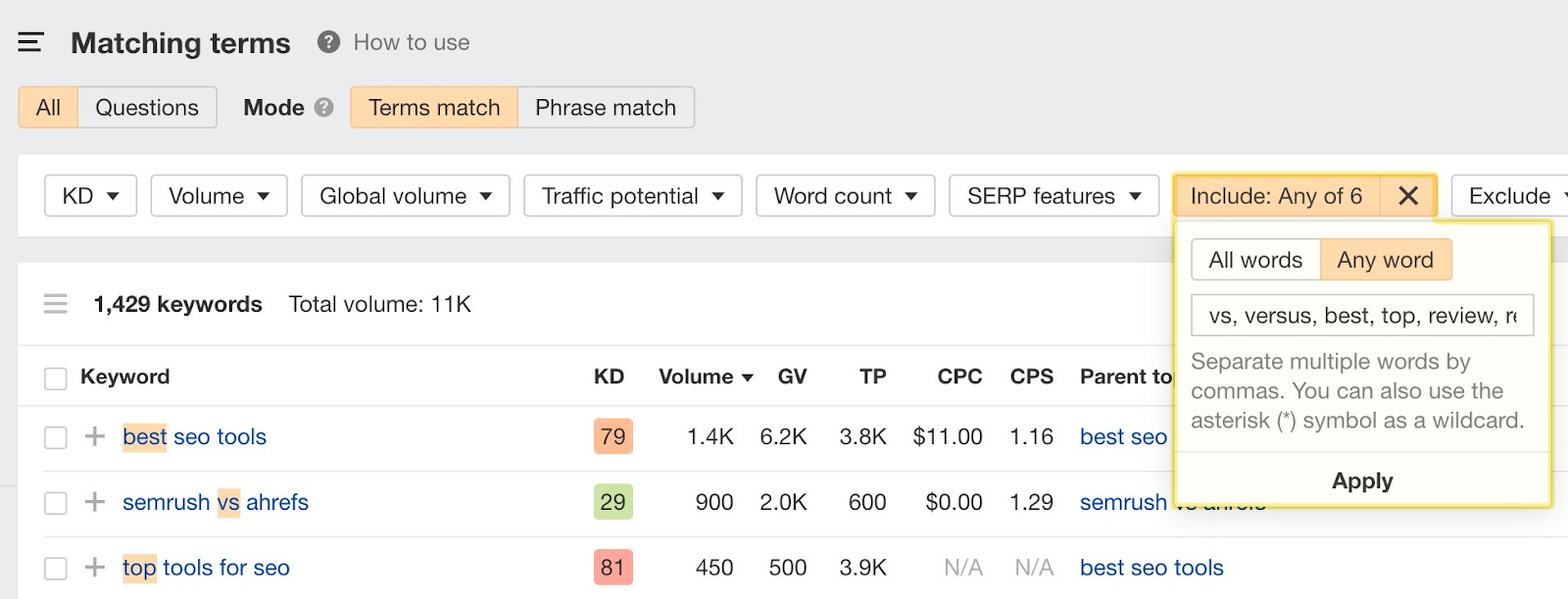
We’ll look through the list and pick out the topics that are relevant. For example, we can see from the list that potential customers are comparing our toolset with our competitors’ (e.g., ahrefs vs semrush). Thus, we decided to create a comparison page that addresses all of these topics.
Decision
In this stage, Billy is close to buying. He’s eyeing our tool, looking at the list of features, hesitating on pricing, and taking our toolset for a spin.
If we’re creating content for this stage, we’re actually looking for topics related to our brand.
To do this, simply enter the brand name into Keywords Explorer and eyeball the list.

Now, if you’re a small brand, you may not find many keywords for your brand name. If so, take a look at your Google Search Console data for the things people are searching for that relate to your brand.
Finally, in this stage, people won’t always be using search engines to find the information they need. After all, they’ve likely decided on your brand and may simply be looking for that information on your website. Rather than focus too much on the keywords they’re searching for, look internally.
Scan your internal site search data, talk to your customer support and sales teams, and so on. Figure out what is holding the buyers back from clicking “buy” on your website. That is the content you need to create.
While the process is pretty straightforward, using modifiers will usually leave many keywords on the table. Thus, it’s a good idea to look through keyword ideas that don’t contain any modifiers and consider whether they’re worth targeting.
You can do this by looking through the reports without using any modifiers.
For example, doing this shows us a few topics that we could potentially target, such as “seo course” and “seo checklist”—both of which do not contain any modifiers we’ve used thus far.

Recommended reading: Keyword Research: The Beginner’s Guide by Ahrefs
Step 3. Create content for each stage
Now that you have the topics for each stage of the buyer’s journey, it’s time to create content for them.
It is likely you’ll have to create different types of content for the different stages. For example, in the Awareness stage, buyers are looking for information, e.g., blog posts, videos, etc. Whereas for the Consideration stage, buyers are comparing, so they may be looking for category pages or comparison pages.
The easiest way to figure out what kind of content you should create is to analyze the top-ranking pages for the three Cs of search intent.
1. Content type
Content types usually fall into one of five buckets: blog post, product, category, landing page, or video. For example, all the top-ranking pages for “how to increase blog traffic” are blog posts.
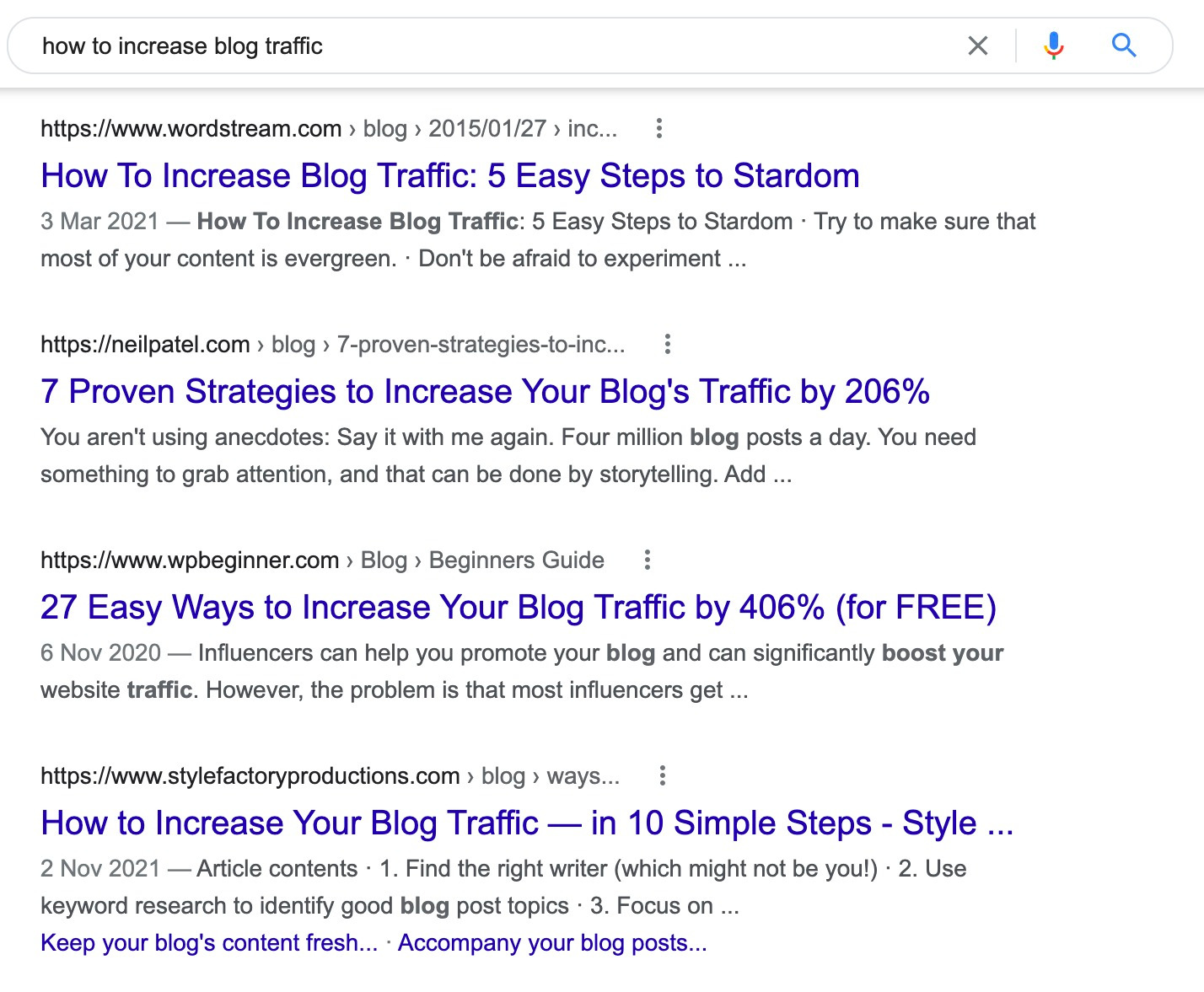
Whereas for “backlink checker,” they’re all landing pages.

2. Content format
This mostly applies to blog posts, which are usually how-tos, listicles, news articles, opinion pieces, or reviews. For example, the top-ranking results for “link building” are mostly guides:
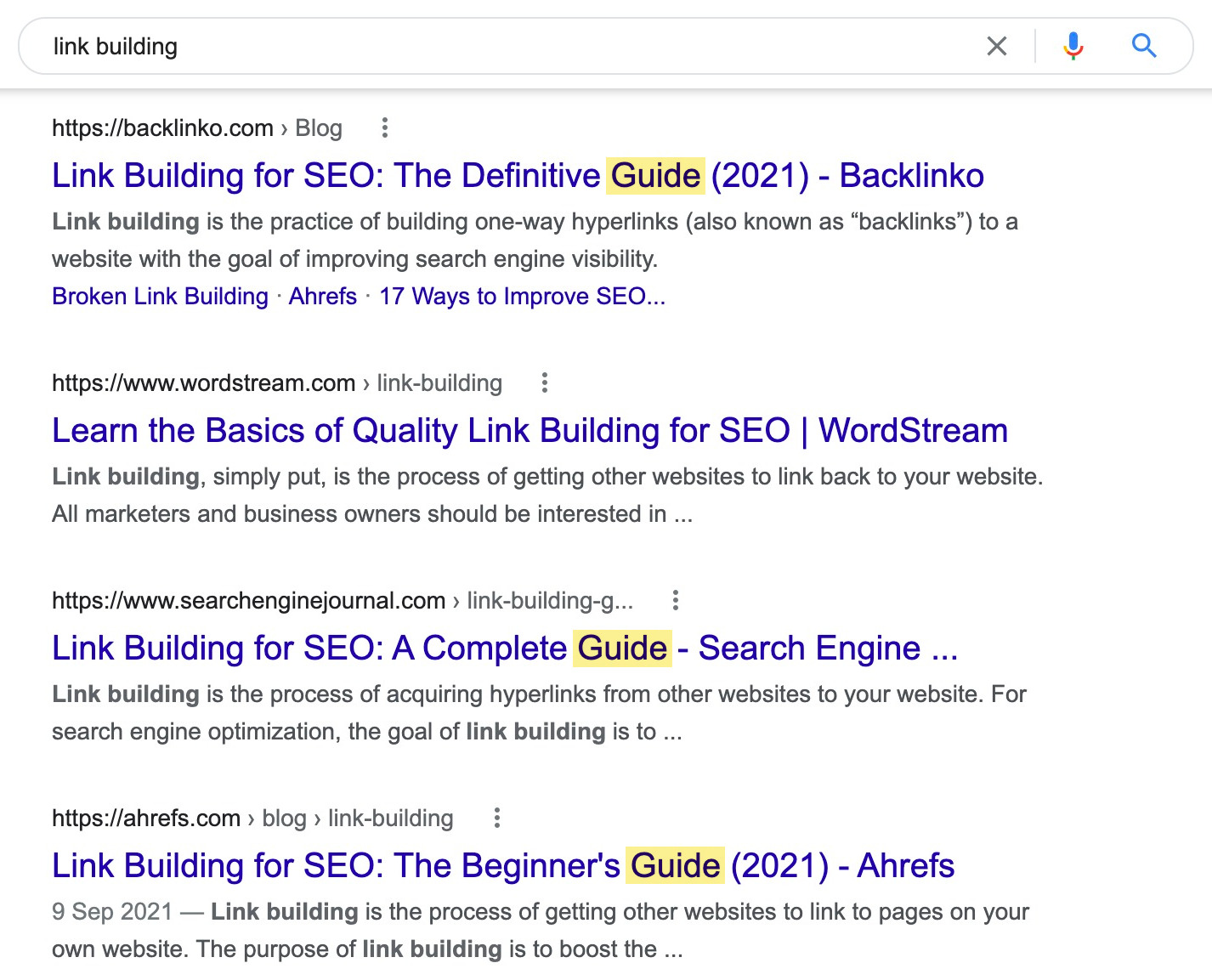
3. Content angle
This refers to the main selling point of the content. For example, people searching for “best SEO tools” want the results to be fresh:

Step 4. Add appropriate calls to action for each piece of content
If you’re creating “Awareness stage” content, it’s not useful to try and sell your product right away. After all, the buyer has only just discovered their problem and is at the stage of researching.
Instead, you should add calls to action (CTAs) that are appropriate for the next stage. (In this case, it’s Consideration.)
So, for example, rather than promote our pricing page to someone who’s just learning SEO, we can introduce our suite of free tools instead. That way, potential customers can get acquainted with what we do and how our tools work. Alternatively, we can encourage them to sign up for our newsletter to learn more about SEO.
If your content is for the Consideration stage, you may want to link to your trial or collect potential customers’ contact information so that your sales team can reach out.
Final thoughts
While it may be presented as a linear stage model, the buyer’s journey never really works that way in real life.
Just think about your own behavior. Do you follow such a clean linear progression when buying something? Unless it’s an impulse buy, probably not. You probably bounce around each stage as you research, go about your day, hesitate, try stuff out, forget about it, research some more, etc.
While this model does ensure you’re creating content for each stage so that potential buyers can discover you, bear in mind that it is not perfect.
Any questions or comments? Let me know on Twitter.
